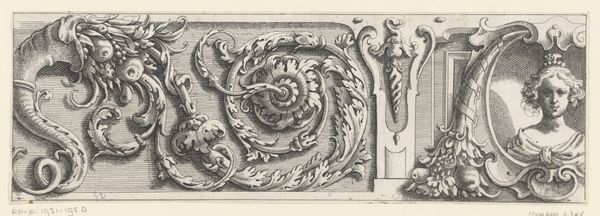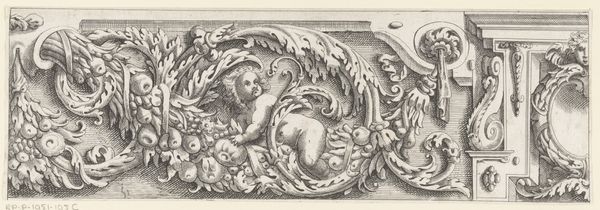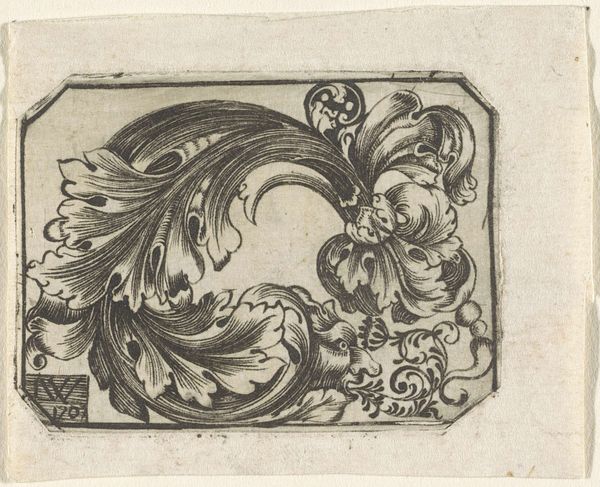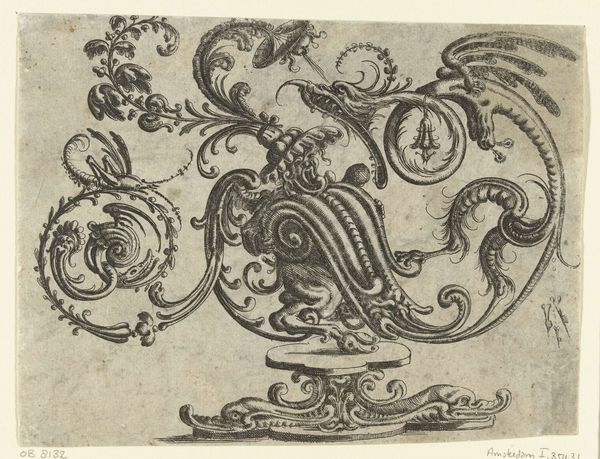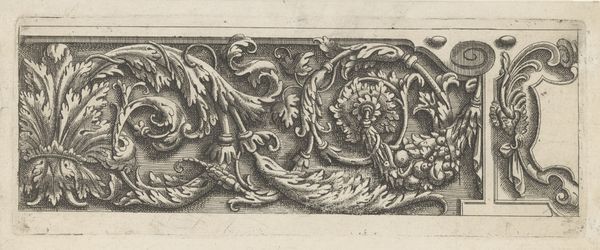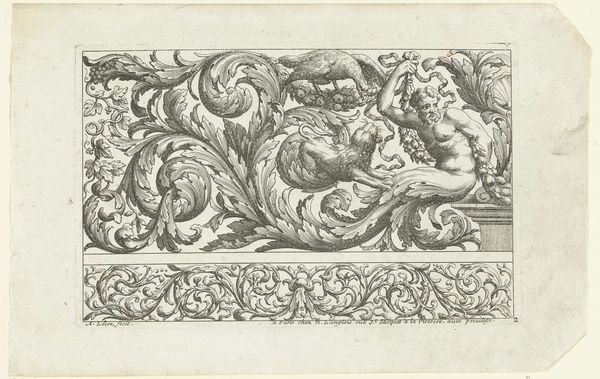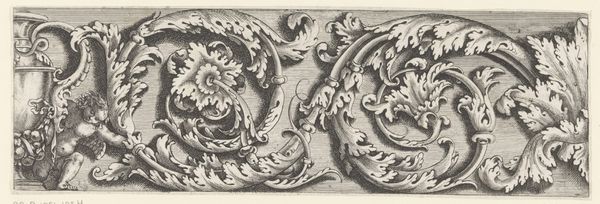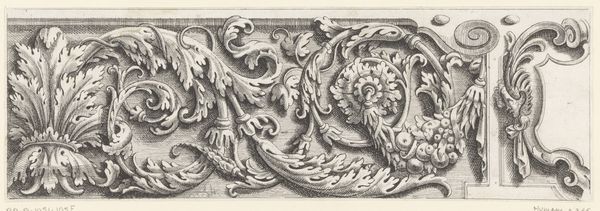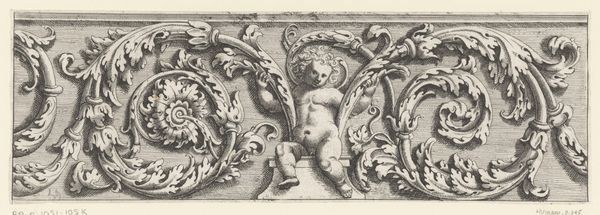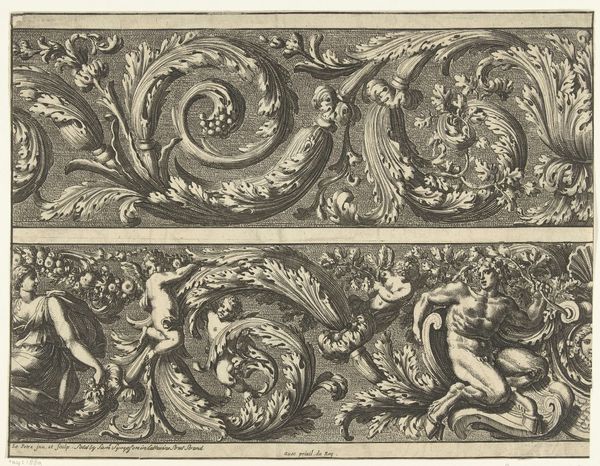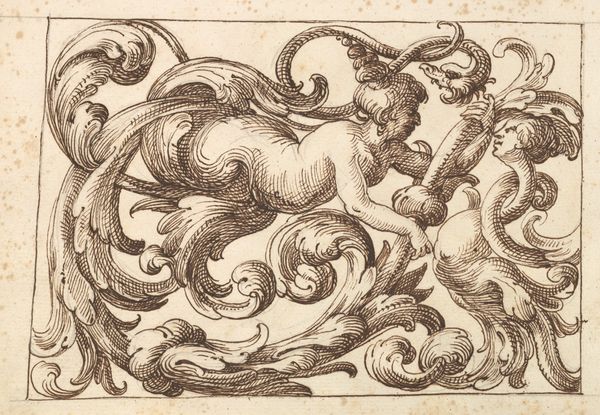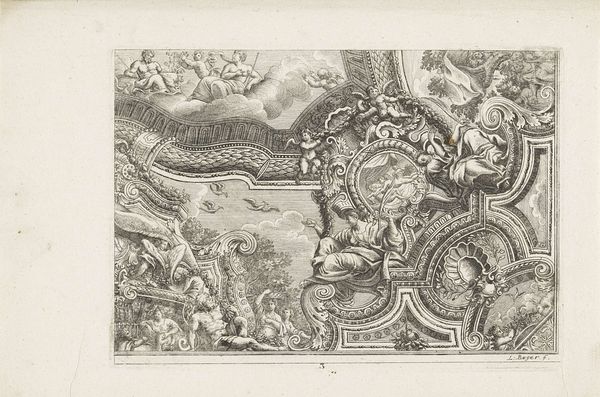
engraving
#
baroque
#
figuration
#
engraving
Dimensions: height 93 mm, width 280 mm
Copyright: Rijks Museum: Open Domain
Curator: This ornate engraving, known as “Scroll with acanthus leaves and putto with vase”, comes from around 1640. Though the artist is currently listed as Anonymous, it is clearly rooted in the Baroque aesthetic. Editor: My immediate reaction is how busy the composition is! There's so much swirling detail, particularly with the acanthus leaves, and a captivating sense of controlled chaos. The contrast between the smooth putto and the rough textures of the ornament is also really striking. Curator: Indeed! Its ornamental nature makes it easily situated within the Baroque style, known for grandeur, complexity, and an emotional impact. The inclusion of the putto is itself a potent symbol of power. We see time and again this type of rendering employed by aristocratic figures of the time. Editor: I agree. Thinking about it as an engraving also raises questions for me about its reproducibility and distribution during the time period. I wonder who owned these types of images, and what kinds of artisan and commercial networks it moved through? The technical mastery required to create the texture, light, and shading with lines is simply superb. Curator: I see the putto not merely as an aesthetic feature, but as a symbol that permeates so much of Baroque art history: ideas about virtue, knowledge, perhaps even power when situated among wealth. Consider, also, how the engraver’s social and cultural milieu shaped their view. The question becomes, how do these ideologies endure in contemporary discussions? Editor: That is such an important line of inquiry. It makes me think about how the materials used to create the engraving played a role. What kind of paper was used? What was the ink composed of? Was it handmade paper, signifying a higher value, or something more easily mass-produced? These small things show how it exists in a specific culture of making and consuming art objects. Curator: Analyzing these symbols provides a pathway into the heart of the values espoused and reflected at that time. Editor: Precisely. And understanding the labor and resources invested in its creation provides insight into the values we attach to art as a commodity. A wonderful piece of art that provokes very important questions about value, labor, and symbols in its materiality! Curator: I leave this enriched by these multilayered considerations. An artwork from the 17th century provides crucial insights into current social power.
Comments
No comments
Be the first to comment and join the conversation on the ultimate creative platform.
